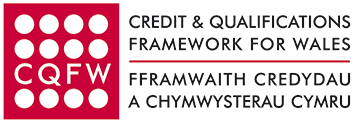| 1. |
Understand how legislation, frameworks, codes of practice and policies relate to positive behaviour support. |
|
| 1.1 | Explain how legislation, frameworks, codes of practice and policies relating to positive behaviour support are applied to own working practice | | 1.2 | Define what is meant by restrictive interventions. | | 1.3 | Explain when restrictive interventions may and may not be used. | | 1.4 | Explain who needs to be informed of any incidents where restrictive interventions have been used. | | 1.5 | Explain why the least restrictive interventions should always be used when dealing with incidents of challenging behaviour. | | 1.6 | Describe safeguards that must be in place if restrictive physical interventions are used. |
|
| 2. |
Understand the context and use of proactive and reactive strategies. |
|
| 2.1 | Explain the difference between proactive and reactive strategies. | | 2.2 | Identify the proactive and reactive strategies that are used within own work role. | | 2.3 | Explain the importance of identifying patterns of behaviour or triggers to challenging behaviour when establishing proactive and reactive strategies to be used. | | 2.4 | Explain the importance of maintaining a person or child centred approach when establishing proactive strategies. | | 2.5 | Explain the importance of reinforcing positive behaviour with individuals. | | 2.6 | Evaluate the impact on an individual’s well being of using reactive rather than proactive strategies. |
|
| 3. |
Be able to promote positive behaviour. |
|
| 3.1 | Explain how a range of factors may be associated with challenging behaviours. | | 3.2 | Evaluate the effectiveness of proactive strategies on mitigating challenging behaviours. | | 3.3 | Highlight, praise and support positive aspects of an individual’s behaviour in order to reinforce positive behaviour. | | 3.4 | Demonstrate how to model to others best practice in promoting positive behaviour. |
|
| 4. |
Be able to respond appropriately to incidents of challenging behaviour. |
|
| 4.1 | Identify types of challenging behaviours. | | 4.2 | Demonstrate how to respond to incidents of challenging behaviour following behaviour support plans, agreed ways of working or organisational guidelines. | | 4.3 | Explain the steps that are taken to maintain the dignity of and respect for an individual when responding to an incidents of challenging behaviour. | | 4.4 | Demonstrate how to complete records accurately and objectively in line with work setting requirements following an incident of challenging behaviour. |
|
| 5. |
Be able to support individuals and others following an incident of challenging behaviour. |
|
| 5.1 | Demonstrate methods to support an individual to return to a calm state following an incident of challenging behaviour. | | 5.2 | Describe how an individual can be supported to reflect on an incident, including:
• How they were feeling at the time prior to and directly before the incident
• Their behaviour
• The consequence of their behaviour
• How they were feeling after the incident. | | 5.3 | Describe the complex feelings that may be experienced by others involved in or witnessing an incident of challenging behaviour. | | 5.4 | Demonstrate how to debrief others involved in an incident of challenging behaviour. | | 5.5 | Describe the steps that should be taken to check for injuries following an incident of challenging behaviour. |
|
| 6. |
Be able to review and revise approaches to promoting positive behaviour. |
|
| 6.1 | Work with others to analyse the antecedent, behaviour and consequences of an incident of challenging behaviour. | | 6.2 | Work with others to review the approaches to promoting positive behaviour using information from records, de-briefing and support activities. | | 6.3 | Demonstrate how reflection on own role in an incident of challenging behaviour can improve the promotion of positive behaviour. |
|
